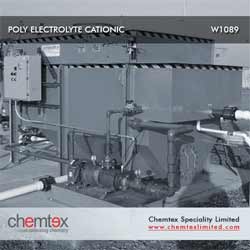Improving Water, Safe Guarding Life
Issues related to wastewater management has been surfacing over digital and print media, social sites irrespective of facts that all of us have knowledge on what and why. The only question is when to step up? With about 80% of diseases humans need to deal with are water-borne. Hospitals and healthcare units deal with more than 80 percent water borne disease cases. Such level of extremism forces people to buy clean water with higher prices.
All these water bodies need to be free of regular contaminants, making them suitable for further utilization, especially drinking. Pathogens, organic and inorganic matter, suspended solids, dissolved gases, paint emulsions, toxic chemicals like pesticides, bio-solids, and many more unwanted substances interfere with the quality and need treatment to make it reusable.
With over 130 Crore population, and three fifth of water volume deemed toxic with zero usability, India is on the edge of facing the worst consequences of water scarcity, reason owing to its varied topography which is otherwise considered as one of its main strength. States like Rajasthan, Punjab, and Gujarat are already feeling the impact and running Government campaigns to raise awareness among their people but is finding it difficult to cut through. The ‘Jal Shakti Abhiyan’ launched by Government of India primarily focuses on these strands viz., Rainwater Conservation and Harvesting, Waste Water Treatment and re-use, Installment of Watersheds, Planting Trees and Drinking Water Sanitation.
Water Sanitation deals with the processes that dwindles the contaminants present in the water before its disposal in the outer environment only after proper inspection of source their geographical conditions. Various physicochemical processes have been implemented off late, which handles water coming out of industries starting with removal of suspended matters to disinfection through RO membrane systems. The process may range from simple sedimentation and decantation to use of UV technology, depending upon the concentration of contaminants. The treated waste water can be used for agriculture, soil conditioning, energy generation, etc.
Wastewater treatment has not been taken seriously for a long time, reason being the dubiety behind its infrastructure and installment but it’s high time that we rethink about this and take necessary measures to ease it down as the potential risk factor is increasing at a staggering rate. The problems and complications associated with fresh water availability is projected to hit up drastically by the end of this decade, affecting every socio-economic factor to face the consequences.
Some of the techniques that can be carried out to prevent contamination of water are:
- Use of new technologies to treat waste water
- Controlling the discharge of industrial wastes into nearby water sources.
- Preventing contamination of crops with extensive chemicals as their run-off generally outpours into water sources
- Industries, commercial buildings, toilets should not be built near drinking water sources
- Managing water and crops to prevent expansion of vector borne diseases
Chemtex Speciality Limited deals with chemical treatment of water, accepted by leading treatment plants, enhancing waste water process and clarification operations across the world. Application of our treatment chemicals helps in effective removal of harmful micro-organisms, detergents and toxins, nullifying their hazardous effects, reducing foul odor and separating those sediments from the water.
For more information, visit www.water-chemicals.com





